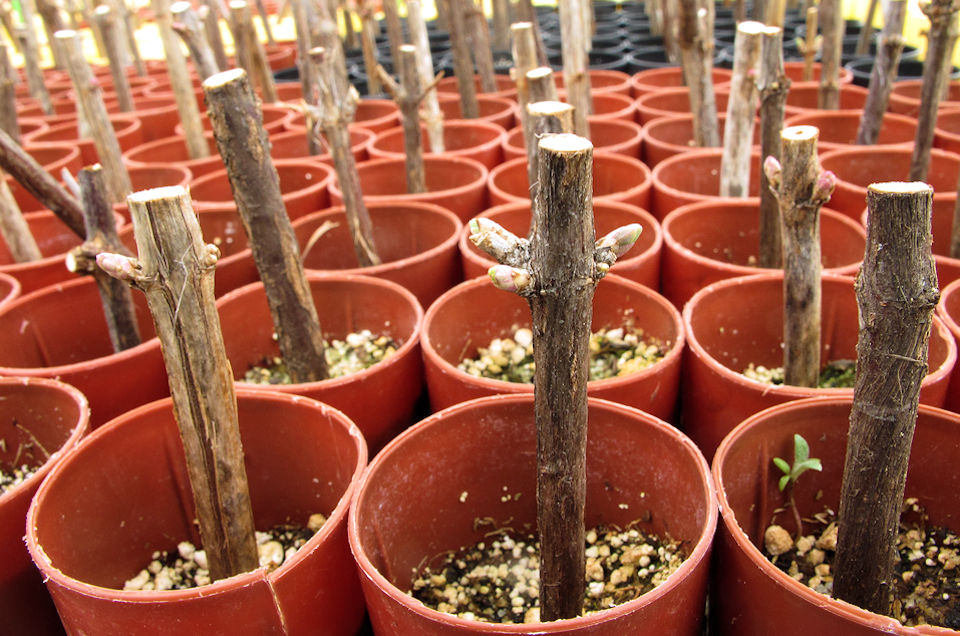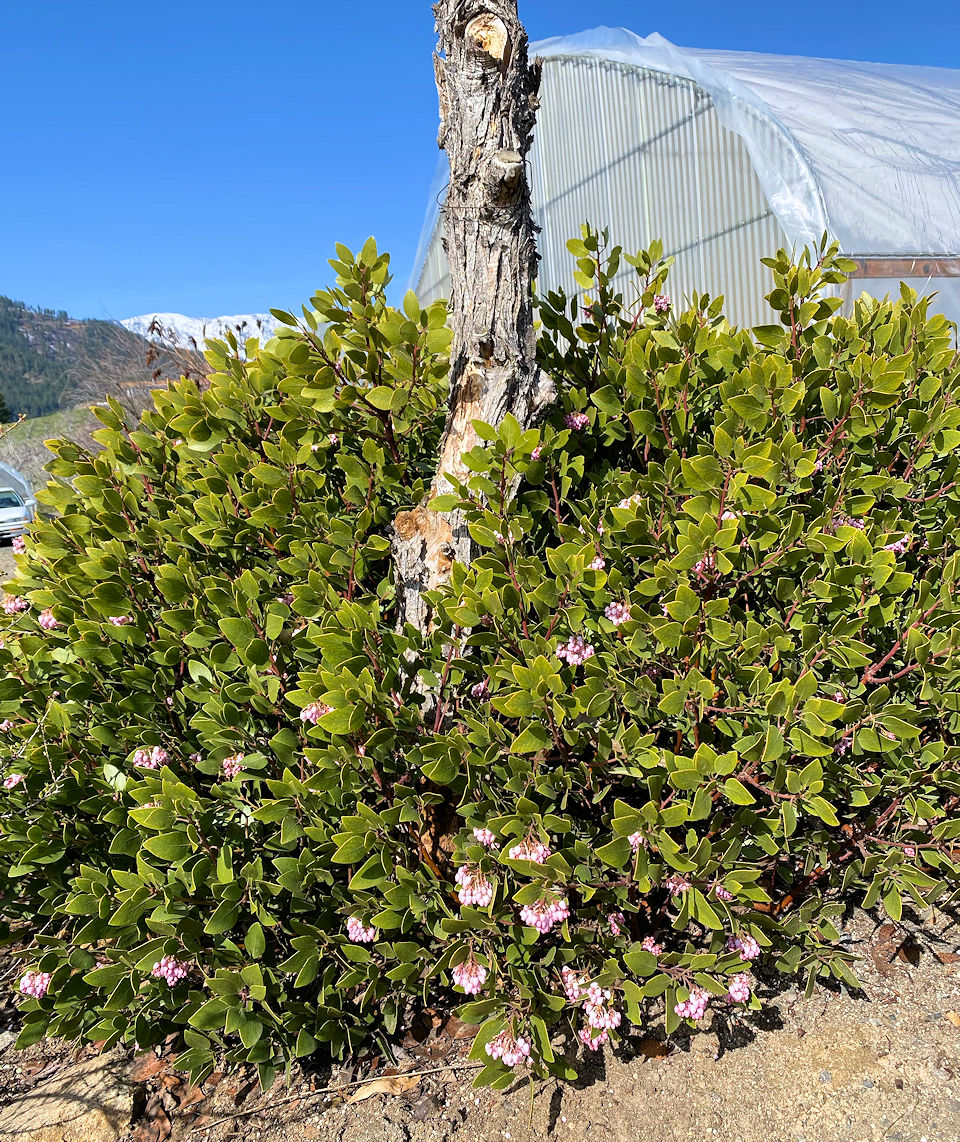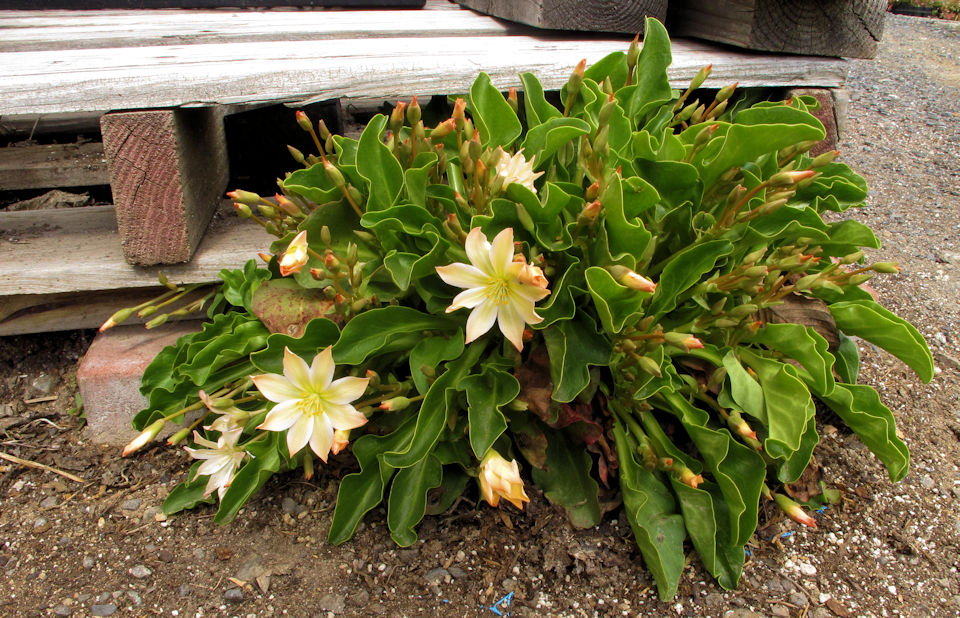The Joy of Spring in the Nursery

Spring is rejuvenating and reassuring, for both me and the nursery. March and April set the stage for the year; the overwintered plants begin growth, the seedlings emerge and the cuttings take root. Above you can see new snowberry (Symphoricarpos albus) seedlings, and just below are snowberry cuttings about to leaf out. We grow most of our plants from seeds; for some species, including snowberry, red osier dogwood (Cornus stolonifera), and black cottonwood (Populus trichocarpa), we use cuttings in addition to seeds to ensure we get enough plants.
Early April is the beginning of the parade of blooms from the native plants planted in the nursery, usually beginning with chocolate tips (Lomatium dissectum), arrowleaf balsamroot (Balsamorhiza sagittata) and wax currant (Ribes cereum). Without fail, each year the first rufous hummingbird appears in the nursery right after the first currant bloom.
Arrowleaf balsamroot framed by wax currant flowers
Actually, the first flowers this year in the nursery were on our two greenleaf manzanitas (Arctostaphylos patula). This small to mid-sized, evergreen shrub is found from Klickitat County south though Oregon, though a population also exists on the the north shore of Lake Chelan (mine are from seeds collected near Bend, OR). I’m trying to propagate more, from both seeds and cuttings, so far with limited success. I’m entranced by the beautiful and varied manzanitas found from California into Oregon; this representative will have to satisfy me for our climate. The plant below was in full bloom at the end of March, with a few overwintered queen bumblebees nosing around.
Another early-blooming shrub intrigues me. Mountain mahogany (Cercocarpus ledifolilus) in this state is found only in the far SE corner … except for a few large examples growing in the Entiat Valley of Chelan County. Apparently, these were planted years ago along a road well into the national forest; from seed collected there I’ve been growing more and they thrive in our area. Their flowers (below) are early and inconspicuous, but this evergreen has an interesting form and a sweet, haunting fragrance.
As ever, my favorite flowers of spring are those found on Tweedy’s lewisia (Lewisiopsis tweedyi). Derby Canyon Natives is at a lower elevation than the wild populations of this choice wildflower, so the flowers here are a preview of the many displays that await those of us who venture into the Wenatchee Mountains of Chelan and Kittitas Counties in the months ahead. The plant below has over ninety flower buds this year and is a volunteer growing beneath a pallet I set down seven or eight years ago; I don’t dare move it now!







